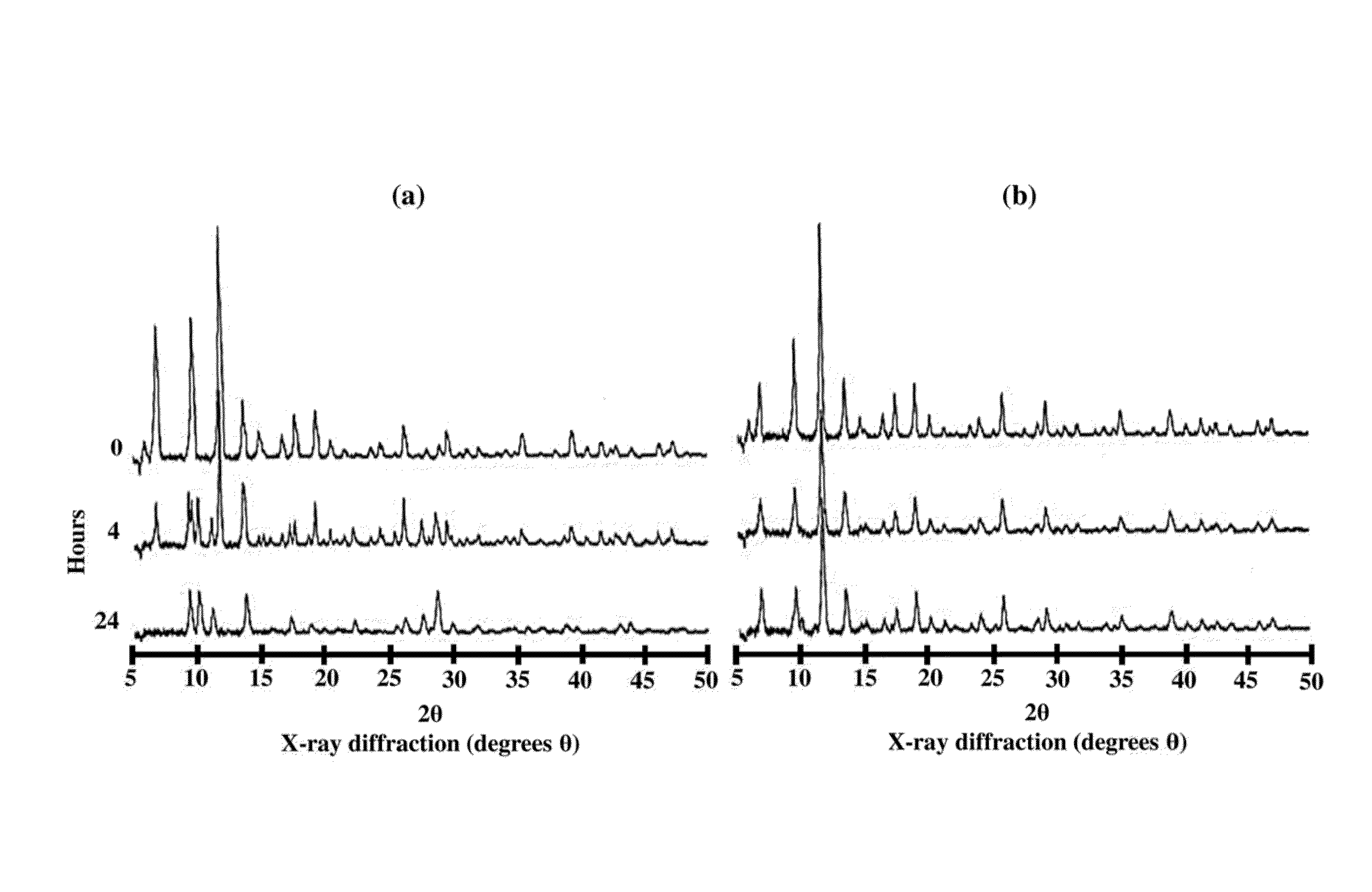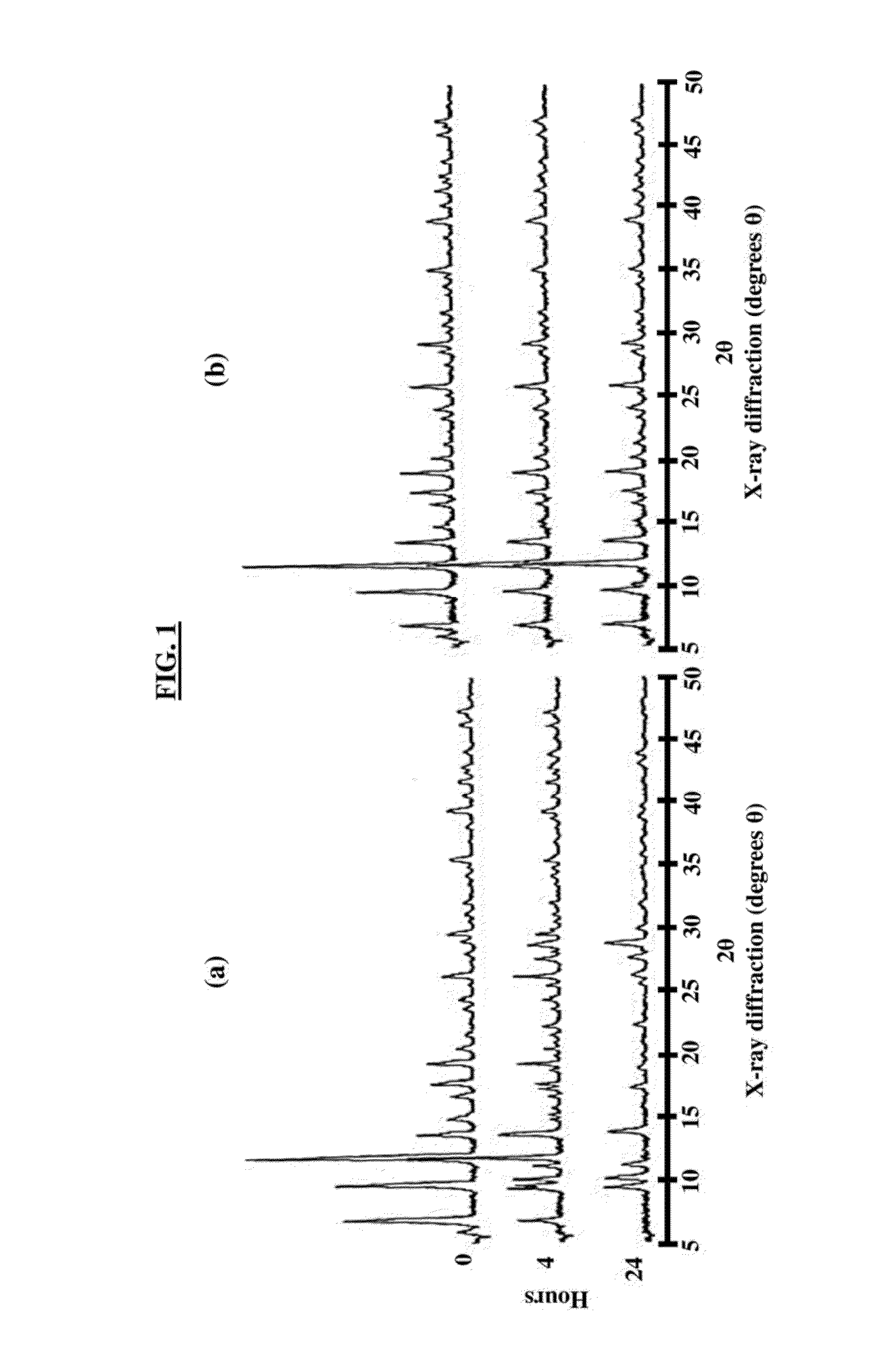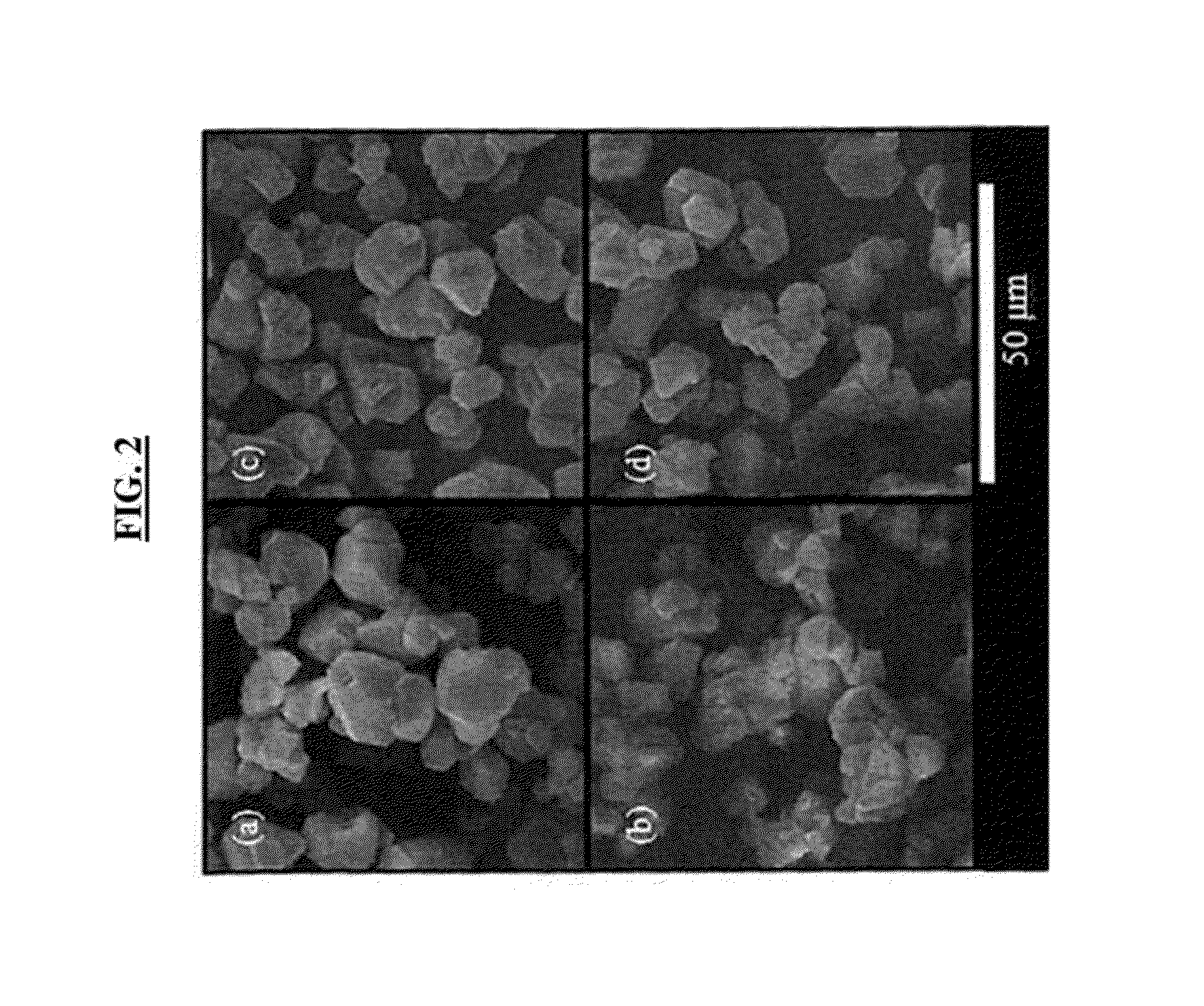Removal of toxic chemicals using metal-organic frameworks (MOFs) post-treated via plasma-enhanced chemical vapor deposition (PECVD) with fluorocarbons
a technology of metal-organic frameworks and toxic chemicals, which is applied in the field of filtration media, can solve the problems of toxic chemical interaction with unsaturated metal sites within the mof, aging and degradation of activity, and shortening the removal of a full spectrum of toxic chemicals
- Summary
- Abstract
- Description
- Claims
- Application Information
AI Technical Summary
Benefits of technology
Problems solved by technology
Method used
Image
Examples
Embodiment Construction
[0017]The embodiments herein and the various features and advantageous details thereof are explained more fully with reference to the non-limiting embodiments that are illustrated in the accompanying drawings and detailed in the following description. Descriptions of well-known components and processing techniques are omitted so as to not unnecessarily obscure the embodiments herein. The examples used herein are intended merely to facilitate an understanding of ways in which the embodiments herein may be practiced and to further enable those of skill in the art to practice the embodiments herein. Accordingly, the examples should not be construed as limiting the scope of the embodiments herein.
[0018]The embodiments herein provide a process for removing ammonia and other toxic chemicals using MOFs post-treated with fluorocarbons through plasma-enhanced chemical vapor deposition (PECVD). Referring now to the drawings, and more particularly to FIGS. 1 through 4, where similar reference ...
PUM
| Property | Measurement | Unit |
|---|---|---|
| Toxicity | aaaaa | aaaaa |
Abstract
Description
Claims
Application Information
 Login to View More
Login to View More - R&D
- Intellectual Property
- Life Sciences
- Materials
- Tech Scout
- Unparalleled Data Quality
- Higher Quality Content
- 60% Fewer Hallucinations
Browse by: Latest US Patents, China's latest patents, Technical Efficacy Thesaurus, Application Domain, Technology Topic, Popular Technical Reports.
© 2025 PatSnap. All rights reserved.Legal|Privacy policy|Modern Slavery Act Transparency Statement|Sitemap|About US| Contact US: help@patsnap.com



